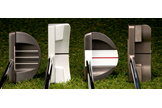Should I use a centre-shafted putter?
Published:
Centre Shaft putters Review: We put four of the latest centre shaft putters to the test.
Centre-shafted putters have been part of the game for as long as most of us can remember. Back in the ’60s and ’70s, you were almost the odd one out if you didn’t own an old-school ‘bullseye’ or ‘golden goose’ putter. But since Ping introduced the revolutionary Anser model, many golfers have made the switch to face or heel-balanced putters and ditched centre-shafted blades for good.
Only a handful of models are now available from the game’s biggest brands, and that’s despite Payne Stewart and Zach Johnson winning multiple Majors with one in the bag.
But while their popularity may be dwindling, we reckon many amateurs could benefit from a putter which looks very simple to set up and use. To put our theory to the test, we spoke to three leading designers and put four centre-shafted models head to head to weigh up the pros and cons.
Review: Ping Sigma G Kinloch C putter from £175
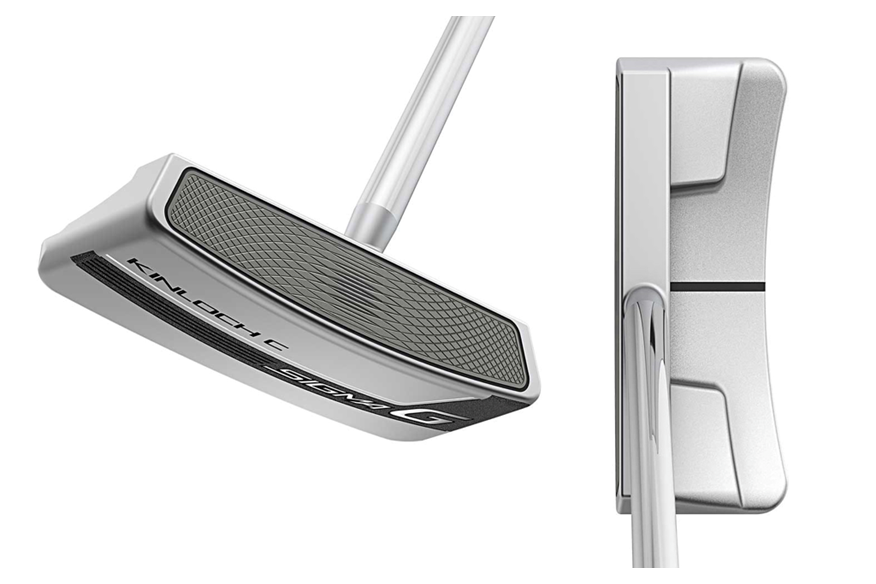
Loft: 3° Weight: 365g Toe hang: Face balanced
You need to know:
The Sigma series features true roll grooves, which now covers the entire face with variable widths to deliver improved speed control when you hit putts off centre. The aluminium face insert is backed by elastomer to deliver a softer feel and consistent ball speed.
Verdict:
Could you wish for a simpler looking putter than the Ping Sigma G Kinloch? A toe and heel weighted blade with a single sightline focuses attention right on the back of the ball and the perfect impact location. The slight wing-shaping gives the impression of being forgiving and stable like an MOI putter, which is completely unexpected in a blade. The flat-fronted Ping PP60 grip and aluminium face insert feel fantastic and thanks to the face grooves. pace control is really consistent, especially when putting on lightning fast greens.
Review: Odyssey O-Works R-Line putter from £179
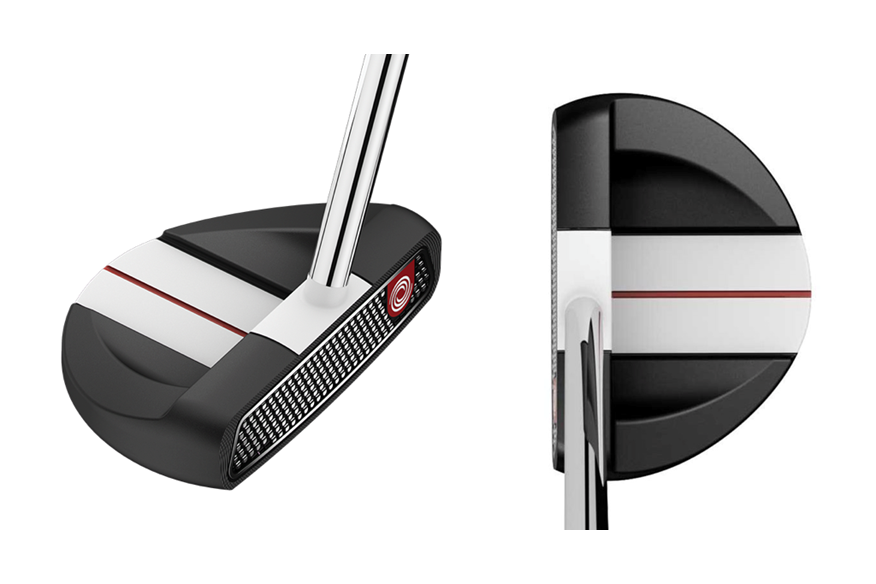
Loft: 3° Weight: 350g Toe hang: Face balanced
You need to know:
A mid-sized mallet with a high contrast Versa alignment system to help you aim more accurately. A micro-hinge thermoplastic and stainless steel face insert lifts putts into a smoother roll with more top spin. A new red sightline helps you set up square to the target.
Verdict:
O-Works burst onto the scene this year and we’re big fans of the roll and feel tech which is housed inside the insert. Odyssey has obviously done their homework on how the microhinges interact with the ball at impact. Some critics say the feel is too muted, but we think it’s spot on, and it performed brilliantly in our skid and roll test earlier in the year. The Odyssey O-Works R-Line has versa cosmetics which are a major help in setting up square and keeping the blade aligned during the stroke, particularly if you draw a red line on your ball to line up with the red sightline.
Review: Bettinardi Studio Stock #28 putter £319
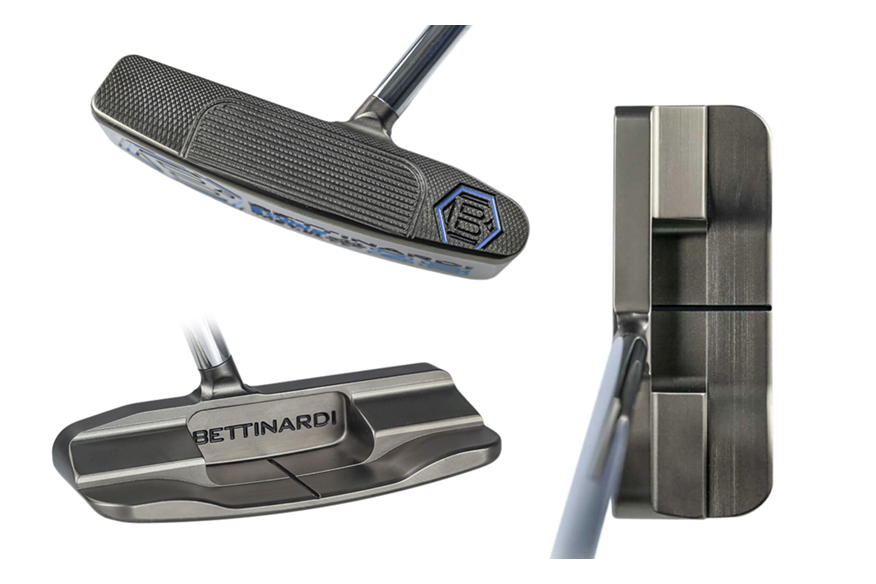
Loft: 3° Weight: 358g Toe hang: Slight
You need to know:
All of Bettinardi’s putters are CNC milled in the USA. The #28 is crafted from mild carbon steel to deliver premium and precise feel and feedback. A F.I.T grooved face removes 55% of material from the hitting surface, giving the softest feel of all Bettinardi ranges.
Verdict:
Bettinardi has carved out a lofty position at the top end of putter manufacturing thanks mainly to working with the best materials, as well as CNC milling every one of its designs in the US. The Bettinardi Studio Stock #28 has a super-premium feel and is perfect for blade fans who have a straight back-and-through stroke. Somehow this putter fosters the feeling of simply stroking the ball with the back of the left hand which generates a very pure roll. The traditional pistol-shaped grip is a lovely change from the oversized models used on many putters.
Review: Wilson Staff Infinite South Side putter £95
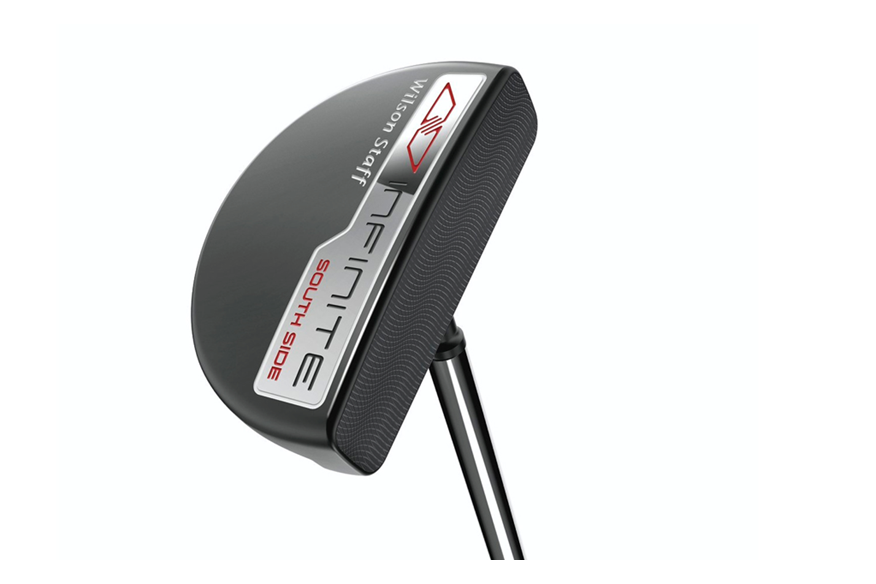
Loft: 3° Weight: 365g Toe hang: Face-balanced
You need to know:
It’s the putter used by Padraig Harrington. The grip weighs in at 104g, which moves the putter’s balance point closer to the hands, creating a higher moment of inertia and more stable putting stroke. The club face is double CNC milled which Wilson say imparts consistent roll and distance control.
Verdict:
The Wilson Staff Infinite South Side is a simple yet unoffensive mallet, with more sightlines than you can shake a stick at. We really like the white line along the back of the top edge, which highlights brilliantly if you’re square to your target line (or not). The South Side is a great introduction to centre-shafted putters, not to mention counter balancing and oversized putter grips, which feels like a hell of a lot of product for £95. The milled face doesn’t have a soft insert so the strike point is firm and decisive which we reckon is perfect for year-round golf.
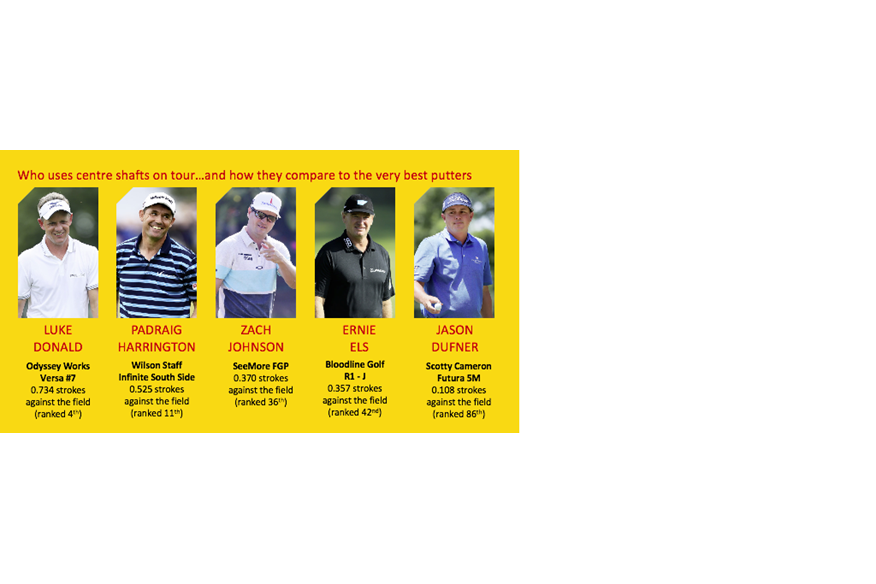
Three putting gurus discuss the merits of centre-shafted putters
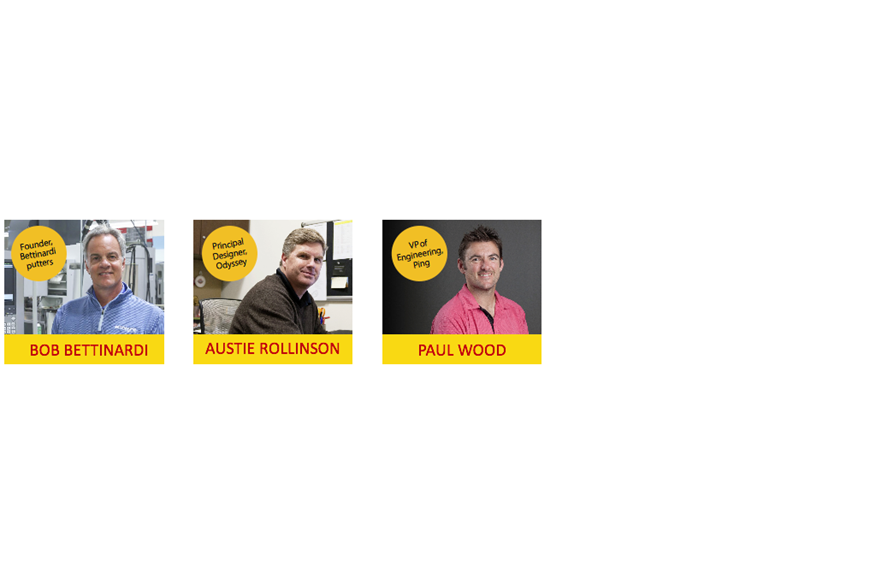
Why are there so few centre-shafted models available today?
BB: I don’t see why there are not more centre-shafted putters on any of the men’s, ladies’ or seniors’ tours. I absolutely love a centre-shafted putter; I’ve used one for about three years.
AR: Centre-shafted putters were the first face-balanced putters. The old Bullseye style putters were set up this way. The advent of double-bend (shaft) mallet putters and crank-neck blades have become much more popular these days so there’s not a lot of consumer demand for centre-shafted putters.
PW: From our experience, centre-shafted putters are preferred by only five to 10 per cent of players. The other 90 per cent tend to show a strong dislike for centre-shaft designs. Our fitting process demonstrates players with a straight back and through stroke are likely to do well with them, since they’re face balanced.
What are the main benefits?
BB: They promote an easy stroke – almost like a pendulum – because there’s no need to think about inside to inside the path. I believe the simplicity of the set up and the confidence of a ‘point and shoot’ look is the main draw.
AR: They’re close to being face balanced, which helps players who have their eyes over the ball and like a more straight back and through stroke. Centre-shafted putters also set up well for players with a neutral hand location. For players who don’t like setting up to the ball with their hands pressed forward, they will help to maintain the correct loft at impact.
PW: The face-balanced nature performs well for players with very little opening and closing of the face. The shaft inserting directly behind the face gives an unobstructed view of the whole face for players who respond well to that kind of alignment.
Are there any drawbacks?
BB: I don’t see any drawbacks, no. I would say, however, that for the type of stroke centre-shafted putters promote, you need to make sure your model is either face balanced (face points to the sky when balanced on your finger) or just a slight toe down.
AR: If you like to have your hands forward at address and have a lot of forward press, you may not have enough dynamic loft at impact. This may cause golfers to drive the ball into the ground and make it bounce during the skid phase. The other drawback would be for golfers who like to set up with their eyes inside the ball and have lots of arc in their stroke.
PW: They’re not well suited to players with significant arcs in their putting stroke. The shaft inserting right into the middle of the head often obscures the central alignment line which the majority of players use for setting up square to their target.
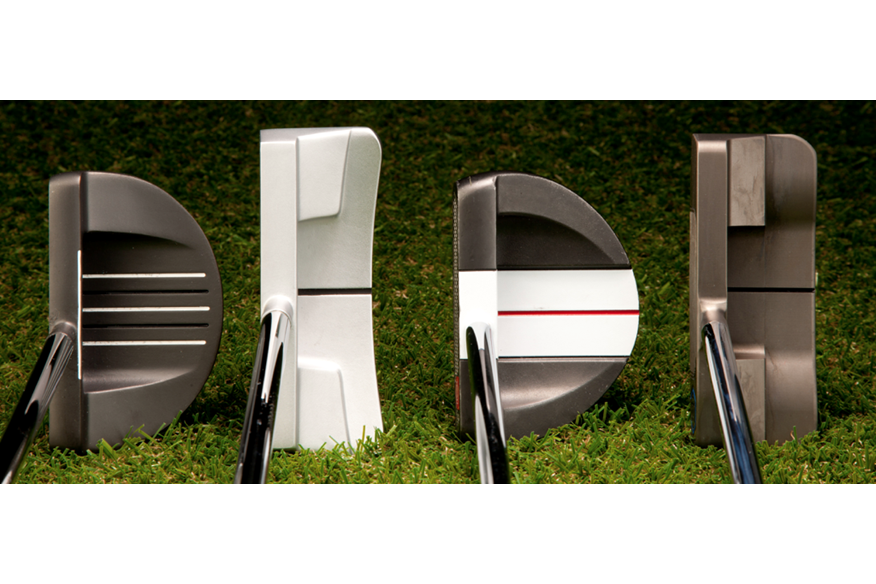
Is there any difference in MOI (forgiveness) between a centre-shafted model and a heel shaft in the same design?
BB: No, the MOI for the same model in either a heel or centre shaft would be the same. Just remember you can get higher (wide body) and lower (blade) MOI centre-shafted putters.
AR: A putter’s MOI is determined by the overall head shape. There’s not a dramatic effect moving the hosel stem from the heel to the centre.
PW: There’s no reason we can’t make a centre-shafted putter with the same MOI as a heel-shafted one. For example, Ping make a Kinloch and Kinloch C putter in the Sigma G line, and the MOI is comparable between both models.
Are miss-hits more exaggerated using a centre-shafted model?
BB: I don’t believe so. I actually think the opposite. It would be easier to keep a miss-hit putt on line with a centre-shafted putter due to the placement of the shaft being closer to the sweet spot.
AR: In our testing, we’ve not seen golfers being less accurate using centre-shafted putters versus a heel-shafted head of the same model.
PW: There is evidence that inserting the shaft into the heel side of the putter adds some stability on off-centre hits. But as long as the putter has a suitably high MOI, it’s not a great concern.
Are centre shafted putters simpler to use? Or are they simply less forgiving?
BB: I think they are simpler to use. I use one! They’re not less forgiving. It’s just another option we provide to the many different types of strokes golfers make. A putter is the most personal club in the bag, and you really have to fall in love with the look in order to make more putts.
AR: Players I’ve seen using a centre-shafted putter extremely effectively have very simple pendulum strokes with very little wrist movement. In this regard, I think using a centre-shafted putter can be very simple to use. However, it does take practice.
PW: I don’t think they’re simpler to use or fundamentally less forgiving; they just provide a very unique look. If the appearance can help you to start putts on your intended target line better, great. But I would recommend staying away from them if you have a lot of rotation in your putting stroke.
